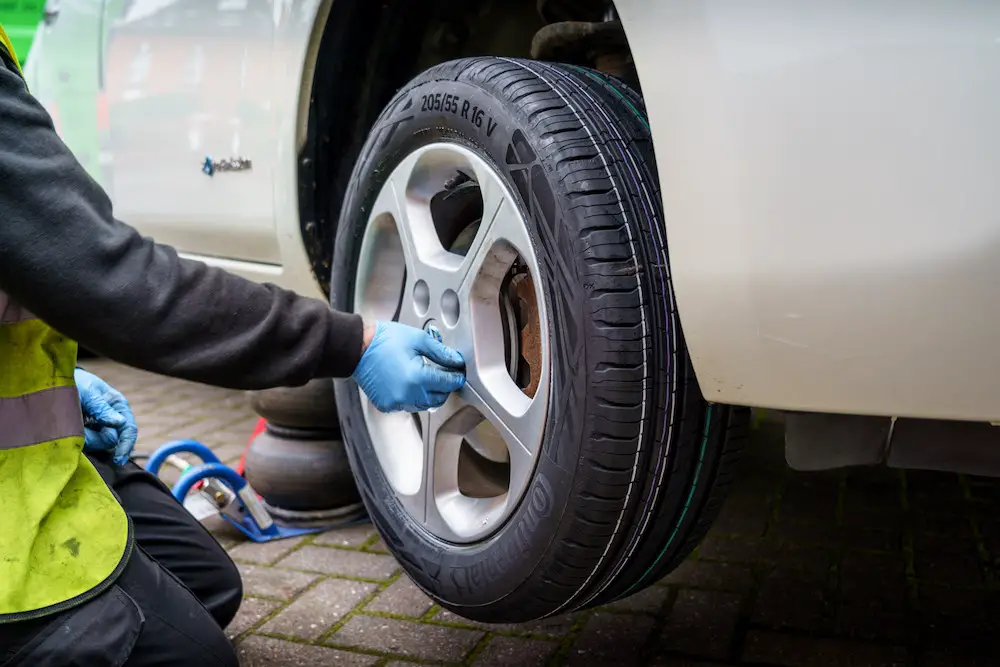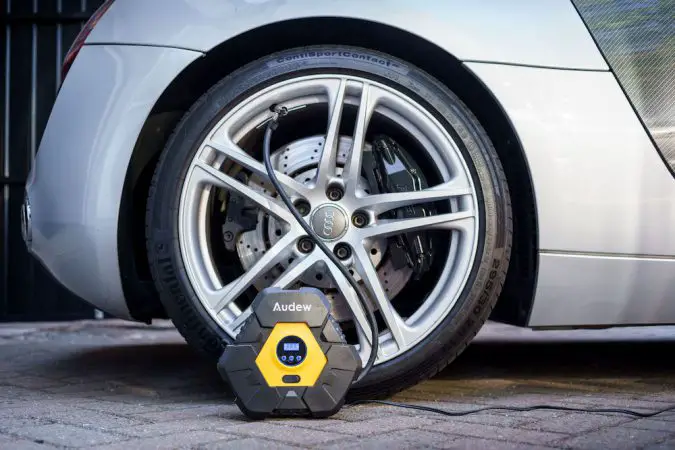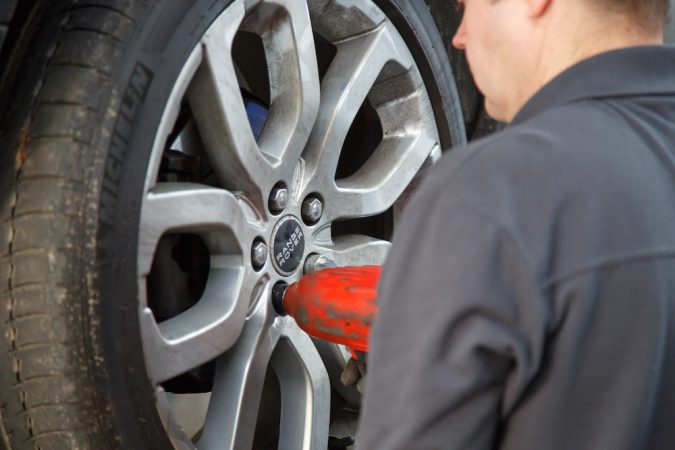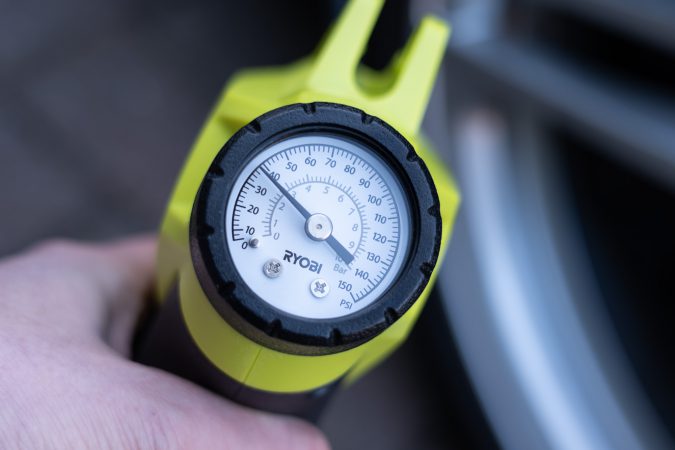Are you getting that annoying tire pressure monitoring system light or TPMS light on your dash? This light is one of the most annoying things around and for a reason. It shows up most of the time to annoy you because there are some malfunctioned sensors. But have you wondered what does low tire pressure mean? Well, we are going to tell you about it and more in this article.
- What Is TPMS?
- Proper Pressure
- Maintain
- Similar Problems
- TPMS On, What Now?
- Resetting
- Cost
- Conclusion
Troubleshooting is essential in vehicles and problems like these are the best way to start your troubleshooting journey. You need to master troubleshooting and this knowledge is going to save you thousands of dollars on potential repairs.
All mechanics want a guy that is inexperienced to enter their shop. And then they will tell you, let’s change this, let’s change that. This didn’t work, let’s try something else. And your bill is nearing $1,000. You replaced everything on your car and you still haven’t fixed the issue.
That’s why don’t be that guy which is shaved by mechanics. You need to learn your car and how your vehicle works. Knowing this as we mentioned will save you thousands of dollars on possible repairs. That’s why we are going to help you out.
In this article, we will learn everything you need to know when it comes to the TPMS light and how this system works. Then we will discuss what does low tire pressure mean? Then we will discuss the ideal tire pressure in your car and why are you losing pressure all the time. At last, we will tell you some tips on how to reset the TPMS light. So, let’s discuss.
What Is A TPMS Light?
The TPMS light is located on your cluster. This light is usually orange in color and when it flashes or turns on, you will instantly notice it.
The TMPS light either has the TPMS lettering in it (if you want to know more, check out our write-up on what does TPMS mean on a car), or the light is resembling a tire that has a big exclamation mark in the center. This logically means that you should be aware that there is something wrong with your tires.
If you don’t know what TPMS means, you should google it quickly when you notice the light. Or look in the manual for the vehicle that is usually located in your glove box.
The TPMS is referring to the Tire Pressure Monitoring System that your car has. This system is in charge of tracking your tire health and see if there is enough pressure in your tires. This system is of great aid since it will tell you that if there is a puncture or something else wrong with your tires.
It will tell you that if the tires are deflated and you will know that you need to inflate them. Inflating them will hopefully turn off the TPMS light from your dash. Also, it will bring your fuel economy back to normal since there is too much fuel spent when there is little air in the tires. How this works we are going to explain later in this article.
The important thing is to notice this light and make sure that you don’t ignore it. The first thing you need to do is to come to a stop at a gas station and inflate your tires at the correct tire pressure. But what is the correct tire pressure and what does low tire pressure mean? Let’s find out in the next chapter.
What Is The Correct Tire Pressure For Your Car?
For you to achieve the correct fuel mileage from your car, you need to have your tires inflated at the recommended tire pressure (just like the Tesla Model 3 tire pressure).
But what is tire pressure? The tire pressure is the density of air in your tires. The more density of air into the tires, the higher the tire pressure. This will result in harder tires and also better drivability.
If there is low tire pressure into your tires, you will notice how your car doesn’t roll well on the road. You will have problems with both performance and fuel economy in your vehicle. This will result in a lot of cash spent on fuel. But also, on more frequent tire changes. Since the tire wear will be much higher and you will have to replace the tires sooner than you have previously expected.
For example, if the tires should last 50,000 miles at least. In this case with low pressure, will last 25,000 miles. And considering that a single tire is around $100. If you drive like this with deflated tires. You are going to lose a lot of life from your tires and you will have to replace them much sooner than expected.
That’s what low tire pressure mean and you should always make sure that you inflate the tires in your vehicle. But what is the right tire pressure to inflate your tires? How much psi of pressure do you need in your tires to keep them in check?
The ideal tire pressure for your car is somewhere between 30 and 35 psi. Everything below that can be considered as deflated tires and your movement will be impaired. Everything above 35 psi is considered to be high tire pressure and you risk tearing the tire.
What Does Low Tire Pressure Mean?
Low tire pressure means that your tires are deflated. The tire pressure in your tires is probably somewhere below 30 psi.
The lower the tire pressure as we mentioned. The more grip your car has, which results in reduced fuel economy of your vehicle.
A pressure between 25 to 30 psi would not be something noticeable for the naked eye and you will think that everything is fine. But if you look at the trip computer, you will notice how you are shaven for a few mpg of fuel mileage.
If you notice this problem quickly, then it’s ok, you have the time to inflate your tires. But if you drive with low tire pressure for a longer period of time and you don’t notice any changes. Then this will result in more money spent on fuel. The more money you spend on fuel, the less money you have to spend on some things that are more fulfilling than wasting all the cash on gas.
Tire pressure below 20 psi is something that is worrying and you will visibly notice that the car has a problem rolling on the road. You also might confuse this problem with other issues that produce similar symptoms like this. And that is something that we are going to cover later in this article.
We have covered what does low tire pressure mean and now let’s see how to maintain the right pressure in your tires.
How To Maintain The Right Tire Pressure?
We learned what does low tire pressure mean and now let’s see how you can maintain the right pressure in your tires. Maintaining the right tire pressure is key to prevent problems in the future and also to enjoy and drive in comfort.
The only way to maintain the right tire pressure is to perform regular checks on your tires. Performing regular inspections will tell you a lot about the condition of your tires.
For this will be useful to have a small air compressor at home. These compressors can be found at affordable prices and you will not have to pay a lot to get one. Usually, they cost somewhere between $20 to $75. They are a great investment that will pay off after some time. And for me is one of the essential things. Why I’m saying this? I’m saying this because this compressor has saved my life numerous times while I was on the road.
It often happens to me to have deflated tires. I use this compressor to inflate them and continue driving. If I didn’t have this tool along with my tire puncture repair kit. I would have been stranded who knows how many times. These two components are basically a lifesaver.
This compressor also has a gauge on which you can monitor the level of air in your tires. Just make sure that your pressure is somewhere between 30 to 35 psi and you are good to go.
Checking this tire pressure regularly is going to save you thousands of dollars in the long run. If you don’t have an air compressor, you can also take your car to a gas station. On gas stations, there are air compressors and you can refill the tire with air.
Don’t Confuse Low Tire Pressure With Other Problems
Low tire pressure can also be confused with some other problems in your vehicle. Since the low tire pressure impairs the car from moving properly. This may cause you to think that there is something else wrong with your vehicle. In this chapter, we are going to cover the most common misconceptions that you might come across when you are having low tire pressure and you are not aware of it.
Seized Brake Caliper
The number one thing that you will think if your car accelerates slowly and doesn’t have the right momentum are seized brake calipers. The symptoms when the calipers are stuck can correlate with the low tire pressure problem.
Most owners that are into mechanicals may start thinking that there is something wrong in the wheel assembly and brake caliper pistons are probably stuck. Then they will start to disassemble everything. But this doesn’t always have to be the case. In most cases, simple problems like the low tire pressure can also impair your car from moving freely on the road.
Burned Clutch
Another probable wrong assumption that you will have if you are having a low pressure will be a burned clutch. One of the first things that owners of manual cars will have in mind when experience a slow car will be this assumption.
This is the case because when the clutch fails, it shows similar symptoms. And these symptoms include lack of power and slow response from the vehicle. Although you press hard on the gas pedal and the RPM rise. The car simply doesn’t want to move forward. But your gas bill becomes bigger and bigger.
In this case, you have to learn what does low tire pressure means and what are the symptoms. Since this is one of the most frequent hidden symptoms that can misguide people to think that they have other problems. While the problem is quite simple to solve and can be addressed by a simple visit to the gas station and reinflating the tires to the right tire pressure.
As we mentioned the right tire pressure is between 30 to 35 psi. Everything less and above is considered bad tire pressure and this pressure will impair the performance of your vehicle.
Blocked Fuel Filter Or Bad Injectors
Also, another wrong assumption would be that you are having some problems with your fuel system. Most notably, problems with the fuel filter and injectors.
This is the case because when the fuel filter is clogged with debris. It will start to lose its capability to transfer the fuel inside of the engine. The less amount of fuel the more problems you will have. These problems will include reduced engine power and hesitation while accelerating. That’s why it is fairly easy to consider this problem instead of something simple like a deflated tire.
Also, the fuel injectors can get clogged by using bad gas. When the injectors fail, they start to develop problems similar to the ones mentioned above accompanied by reduced fuel economy and other issues as well.
That’s why you should consider checking the tires first. You never know, even some simple things like tire pressure can cause big problems.
My TPMS Light Turned On, What Should I Do?
On every wheel in your car, there is a sensor that is measuring the pressure in your tires. When this light turns on it means that there is something wrong with your tire air pressure.
The probable cause for this light to turn on is that there was a loss of pressure. Every tire is losing some air over time. This loss is recorded by the sensors and these sensors are sending their data to the car computer. Then the car computer sees that there is too little air into the tires and decides to warn you with a TPMS light.
This light should not be ignored and you need to make sure that you check the tire pressure in your tires. The first thing you need to do is to go to your local gas station and make sure that you reinflate your tires. Once you have reinflated the tires the light will disappear. If not, then there is some problem with the TPMS sensors. One or more sensors have failed and you started getting this error message on your dashboard.
These sensors are notorious for failing and these lights are one of the most frequent lights on the dash. That’s why many owners even ignore these lights completely and don’t even bother with them. But you should not ignore the TPMS light.
Why You Should Not Ignore The TPMS Light?
The TPMS light is an indicator that there is something wrong with your tire pressure. This means that the tire pressure is affecting a lot of things. What does low tire pressure mean?
If your tires are deflated, you will get bad fuel mileage and your vehicle will waste more fuel. Not to mention the wear and tear on the tires that will be ten times more compared to the tire wear if you have properly inflated tires.
Also, your safety is in danger. Because maybe you have a puncture on one of your tires. The TPMS light is there to inform you to come to a stop at a gas station and see what is wrong with your tires and if some of them are down on air. This will save you money.
This is the case especially if you get a notification on the highway. You will stop at the nearest gas station and you will possibly fix your tire there. But if you continue driving, you will be required to stop at someplace in the middle of nowhere where nobody could help you and you will have to pay a lot of money to call roadside assistance to give you a lift.
And if the TPMS light turns on because there is something wrong with the sensors you need to have them checked. They might cost you some money to replace but you should not delay this repair. Later in this article, we are going to tell you how to replace them and how to reset the TPMS light from your dash.
TPMS Light Turns On And Off, Why?
It can happen if you are driving on uneven terrain for the tire pressure light to appear and disappear. This is the case because the sensors are feeling these bumps on the road and see that there is a sudden spike in the pressure. For example, if you go over a rock or a pot pothole. In this case, the sensor will react and turn on the light. After the vehicle returns to the smoother tarmac the light will disappear.
Another reason why it turns on and off is that there is temperature fluctuation. If you drive on a hot day and if suddenly rain starts to fall and you drive your car through a puddle of deep water. The sensors might react. Since when the temperatures are colder the pressure drops by around 3 to 5 psi.
You need to make sure that you are aware of these two scenarios and don’t panic if the light turns on and off all of a sudden. This doesn’t mean anything. The best thing to be sure of is to check your tires on a local gas station and if the pressure is good. If the pressure is good, you have nothing to worry about.
How To Reset This TPMS Light? – What Does Low Tire Pressure Mean
We learned what does low tire pressure mean now let’s see how you can reset that annoying light that you see on your dash.
The way how this works is to inflate your tires up to 30 to 35 psi. To get the right amount of air specifically for your car, you can see the sticker that is behind the gas cap or at the door jams. These are factory-recommended values made specifically for your vehicle and make sure that you follow them.
If you inflated your tires and the light still persists, this means that one or more of your sensors have failed. In this case, you will have to visit a tire shop. Since these sensors are located exactly where you inflate your tire. The tire has to be removed for the sensor to be replaced.
Doing this work at home isn’t doable since you don’t have the proper tooling to do this work. That’s why go to your local tire and alignment shop to get this fixed properly. Don’t wait and observe the light turned on. Act quickly and live without TPMS light on your dash.
Here is a video on how you can find a failed TPMS sensor. For this work, you will need to enter the program mode on your car and then with a special tool to inspect each of these sensors and see which of them has gone bad.
Cost To Reset TPMS Light
The cost to reset and replace the TPMS sensor may vary. Depending on which shop you take your car to. To get this work done the tire has to come off and the valve with the sensor removed.
This will cost you between $50 and $100. These prices are per sensor. So, if you have more sensors that need replacing you will have to pay more.
TPMS Warning Light Facts:
- TPMS is a tire pressure monitoring system that alerts drivers when tire pressure is too low.
- Both overinflation and underinflation can cause tire wear and possible tire failure.
- The TPMS indicator on the dashboard is a horseshoe-shaped light with an exclamation point in the center.
- When the TPMS light comes on and stays on, at least one tire has low pressure.
- The TPMS light can turn on and off due to fluctuating temperatures causing pressure loss.
- If the TPMS light flashes for 60 to 90 seconds every time the car is started and then remains illuminated, it means the system is not functioning properly.
- Regular tire pressure checks should not be replaced by the TPMS.
- The TPMS warning light may be set to illuminate below the tire pressure needed to carry the load in the vehicle.
- The sensor(s) may not be accurately transmitting tire pressure data to the on-board computer.
- Even with TPMS, drivers should check tire pressure once a month and before a long trip or when carrying extra load.
Conclusion – What Does Low Tire Pressure Mean
In this article, we covered a lot when it comes to tire pressure. We answered the question of what does low tire pressure mean? Then we have discussed what is the ideal tire pressure and how you can monitor your tire pressure on your vehicle.
Then we have covered how you can reset the tire pressure or TPMS light manually and then if this doesn’t help, we also listed the cost that you will have to pay if you want to get this problem solved at a tire alignment shop.





1 comment
Thanks for the tip that it’s best to never ignore TPMS lights when monitoring my tires. I’d like to know more about tire change services because there are times when I feel like my car is too wobbly when I’m driving on a slow speed. I think that means that my tires are being squished too much by the weight of my car.